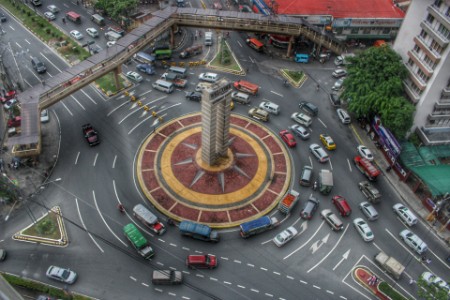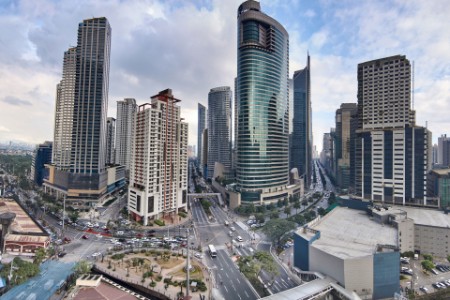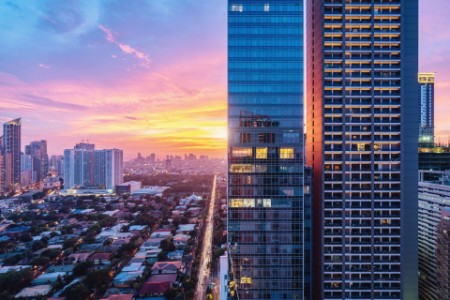
Chapter 1
Strong demand
Why the Philippines is attractive to foreign investors
The World Bank (WB) highlights the Philippines’ increasing urbanization, its growing middle-income class, and a large and youthful population. It’s also worth noting that English is an official language and is taught in all the country’s public schools.
The WB views the Philippines’ economic dynamism as being rooted in strong consumer demand supported by improving real incomes and robust remittance inflows from expatriate workers. Business activities are buoyant – particularly in the services sector, in industries including real estate, finance and insurance.
Such characteristics help put the Philippines squarely on investors’ radar screens, helped along by a domestic market that is buoyed by rising population growth; in 2017 it grew by 1.5%, a higher rate than both Malaysia and Indonesia.
President Duterte, who came to power in 2016, is committed to improving the country’s infrastructure in order to create jobs and business opportunities and boost economic growth. His “Build, Build, Build” program is made up of 75 major projects covering transportation, power, water supply and flood management. This mammoth endeavor envisages a total spend of at least 8t pesos (US$150b). The Government is planning to increase infrastructure spending to approximately 7% of GDP by 2022.
President Duterte has courted foreign investors, particularly in infrastructure, as part of a broader attempt to strategically rebalance the Philippines’ economy.
It has also focused on pushing through reforms, such as the 2017 Tax Reform for Acceleration and Inclusion Act. This revision of the tax code aims to make the system simple and fairer, and includes new revenue-raising measures that are designed to help fund the Government’s infrastructure program.
“Duterte has courted foreign investors, particularly in infrastructure, as part of a broader attempt to strategically rebalance the Philippines’ economy,” says Kurlantzick. “A lot of that investment has not come through yet, but they are clearly trying to woo more smart investment from China.”
Bureaucratic obstacles
Despite the outreach to foreign investors, prominent investors active in the Philippines caution that some restrictions remain. They highlight issues in government effectiveness; for example, some Build, Build, Build projects have faced bureaucratic and procedural obstacles.
There are also economic problems to deal with, including rising inflation, growing public debt and a trade deficit, with some commentators suggesting that the country needs to develop new industries to remain competitive internationally. There are also wide disparities in income and growth between the country’s different regions and socioeconomic classes.
Nevertheless, investors see the direction the country is heading as positive. For example, efforts to make it more straightforward to do business have garnered plaudits. The Ease of Doing Business Law was fast-tracked and is now on the statute book. It constitutes different types of application that commit the Government to act within 3, 7 or 20 days, depending on the complexity of the application. One feature of the law is that if these deadlines are not met, there is an escalation process that enables companies to report the issue to the appropriate government agency.

Chapter 2
Driving good behavior
How corporate governance standards are improving
In terms of corporate governance, standards in the Philippines are rising, with scores on the ASEAN Corporate Governance Scorecard improving in recent years. Particularly strong improvements have been seen in two categories: disclosure and transparency, and the responsibilities of the board.
The central bank, Bangko Sentral ng Pilipinas (BSP), has implemented consumer and investor protection standards that are expected to be embedded into the corporate culture of BSP-supervised institutions. It also expects that these reforms will drive good behavior and greater market discipline, addressing conflicts that are harmful to the interests of financial consumers.
The Philippines is at the forefront in advancing financial reporting standards in the region, having adopted IFRS as early as 2005. This makes it attractive to multinational companies that prefer to use IFRS rather than multiple domestic standards. The widespread use of English as a business language magnifies this attraction, especially when compared with other countries in the region where IFRS adoption is delayed by the need for translation into the local language.
In addition, the Philippine Securities and Exchange Commission (SEC) introduced its SEC Oversight Assurance Review Inspection program in 2018 to promote high-quality audits and enhance confidence in the capital markets.
The BSP is planning further steps to improve standards. It has also been strengthening its anti-money laundering and “know your customer” policies for financial institutions, given the involvement of a local bank in the hacking of Bangladesh’s central bank in 2016. It has also increasingly made officers directly accountable for violations, with hefty fines imposed and the board replaced in that incident.
Related article
In May 2017, the BSP and the International Finance Corporation (IFC), a member of the World Bank Group, signed a Memorandum of Understanding to enhance capacity and raise environmental, social and corporate governance standards among Philippine banks. IFC will support the BSP in improving its assessment tools to promote good governance and effective risk management in the banking system. It will also contribute to the BSP’s capacity-building initiatives, particularly in applying the proportionate legal and regulatory framework.
Such moves should help to improve investor confidence in a growth-oriented economy that intends to go on defying stereotypes.

Chapter 3
A commitment to good corporate governance
A personal view from the EY Country Managing Partner
J Carlitos Cruz, Chairman and Managing Partner, SyCip Gorres Velayo & Co., says: “Over the last two decades, the Government, regulators and businesses in the Philippines have been increasingly focused on and committed to promoting corporate governance. Driven primarily by the SEC and the BSP, corporate governance has become a significant matter for most boards, in particular for financial services companies.
“The SEC mandated that companies exercise and report on corporate governance practices through the issuance of the Code of Corporate Governance in 2002. This was superseded by a revised code in 2009, with amendments in 2014. Additionally, the SEC released the Philippine Code of Corporate Governance Blueprint in 2015, which was followed by the new Code of Corporate Governance for Publicly Listed Companies in 2016. It has also announced its alignment with the ASEAN Corporate Governance Scorecard principles.
“While the latest SEC guidelines apply to all listed companies, the financial sector has additional regulations promulgated by the BSP through its Manual of Regulations for Banks and Manual of Regulations for Non-Bank Financial Institutions, which are updated regularly to reflect improvements in regulatory requirements. These provide extensive guidance and compliance information to help financial institutions in the Philippines promote transparency and accountability.
All stakeholders have demonstrated their resolve and commitment to promote a strong, healthy and stable banking and financial system.
“In August 2017, the BSP issued a circular to provide enhanced corporate governance guidelines for BSP-supervised financial institutions, amending the Manual of Regulations for Non-Bank Financial Institutions. This raises the bar on what is expected from the board of directors and risk management systems, and provides term limits for independent directors.
“In addition to its partnership with the BSP, the IFC has been working with the SEC in training 250 representatives of publicly listed companies on best practices in implementing a new corporate governance code that took effect on 1 January 2017. The code, which aims to increase the board responsibilities, competence and commitment of company directors, is among the latest examples of IFC’s contribution to the development of corporate governance policies and regulations in more than 30 countries worldwide.
“While there is still much work to be done to truly achieve sustainable and effective corporate governance in the Philippine financial sector, all stakeholders have demonstrated their resolve and commitment to promote a strong, healthy and stable banking and financial system.”
The views of third parties set out in this article are not necessarily the views of the global EY organization or its member firms. Moreover, they should be seen in the context of the time they were made.
Summary
The Philippines is the world’s 34th largest economy, with the potential for considerable growth in the years ahead. Both the Government and the central bank have taken steps to make the country a more attractive destination for foreign investors. There are challenges to overcome, including bureaucratic obstacles, but the country is rightly planning for a brighter future.


